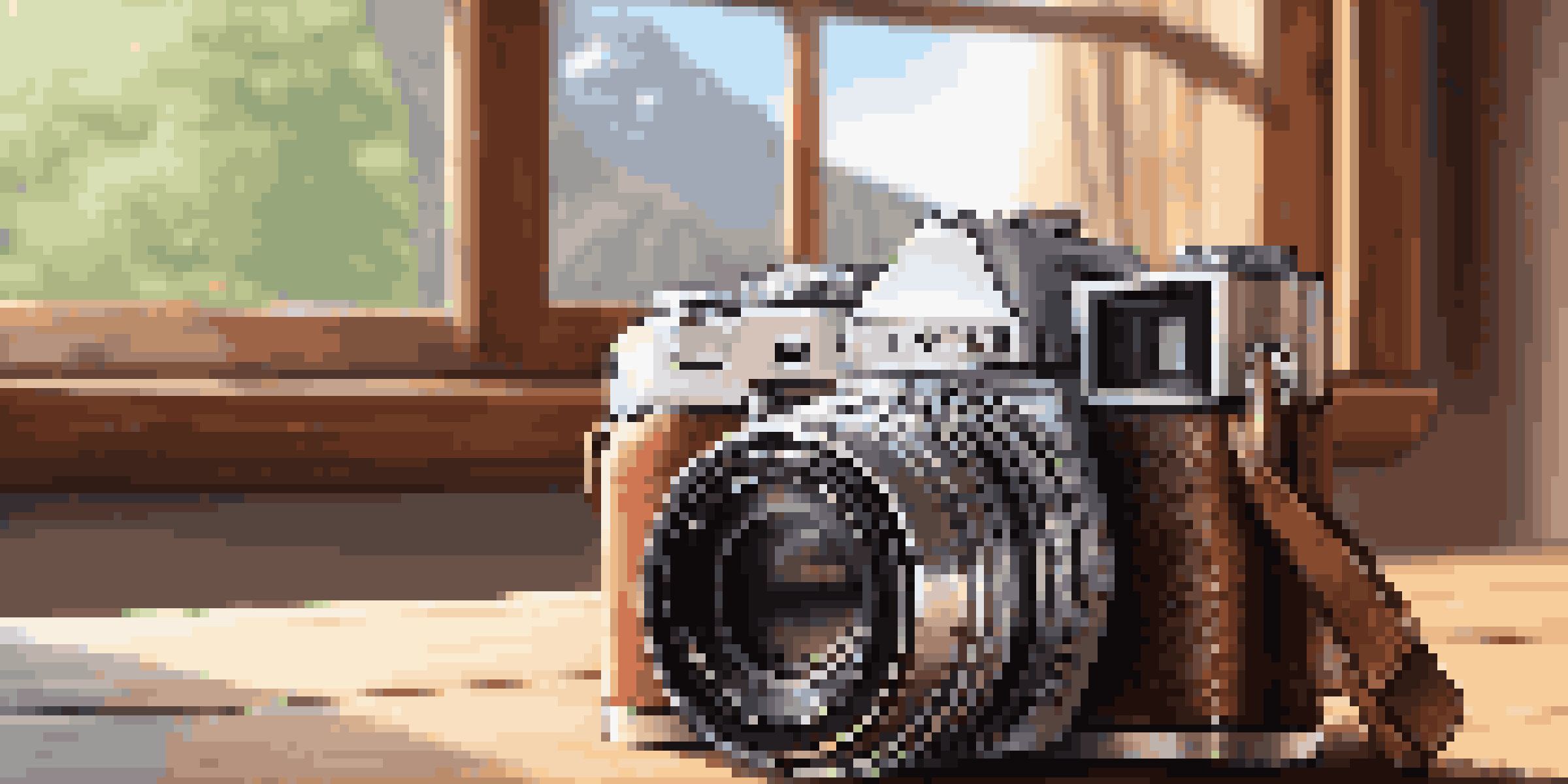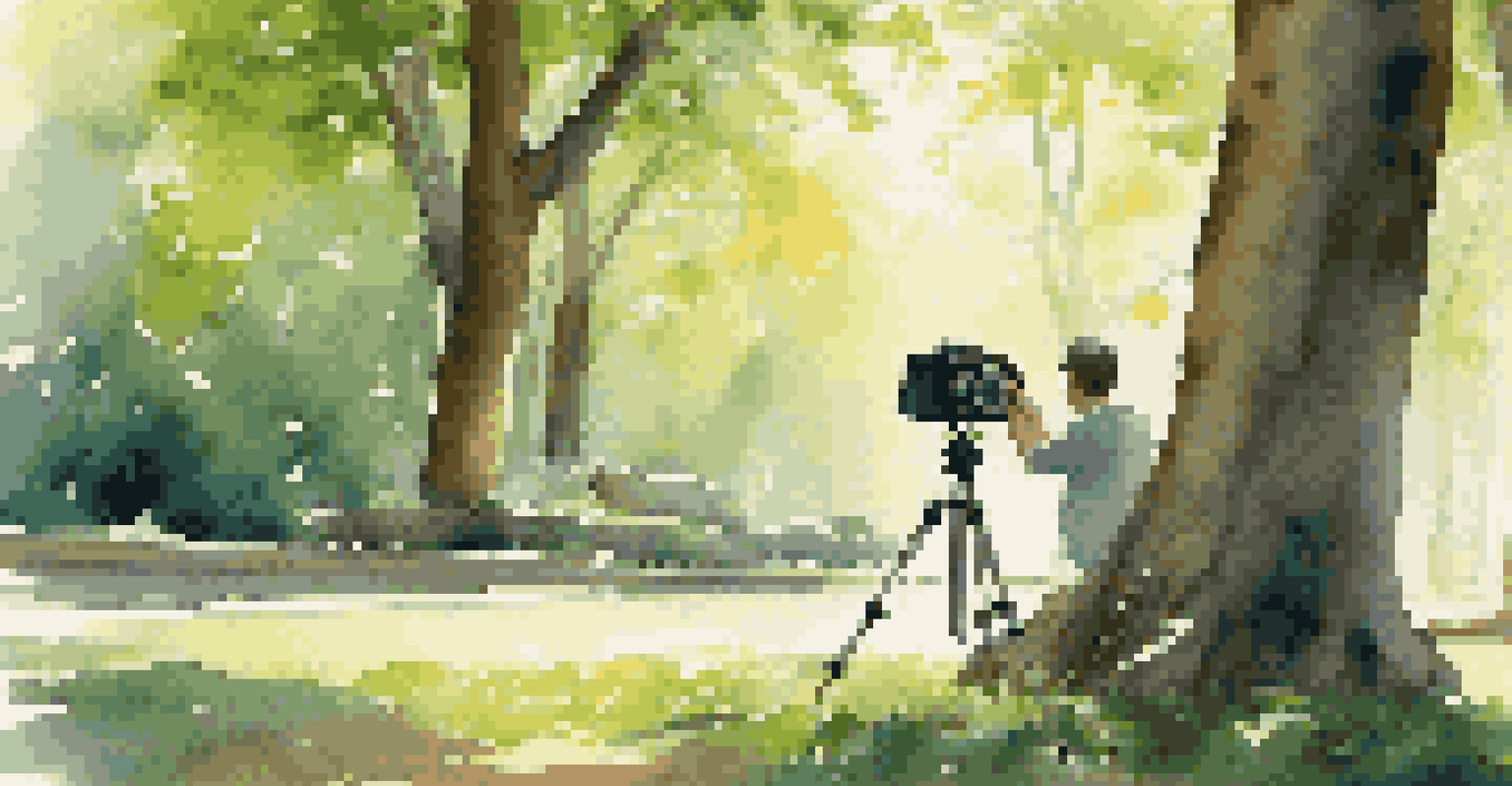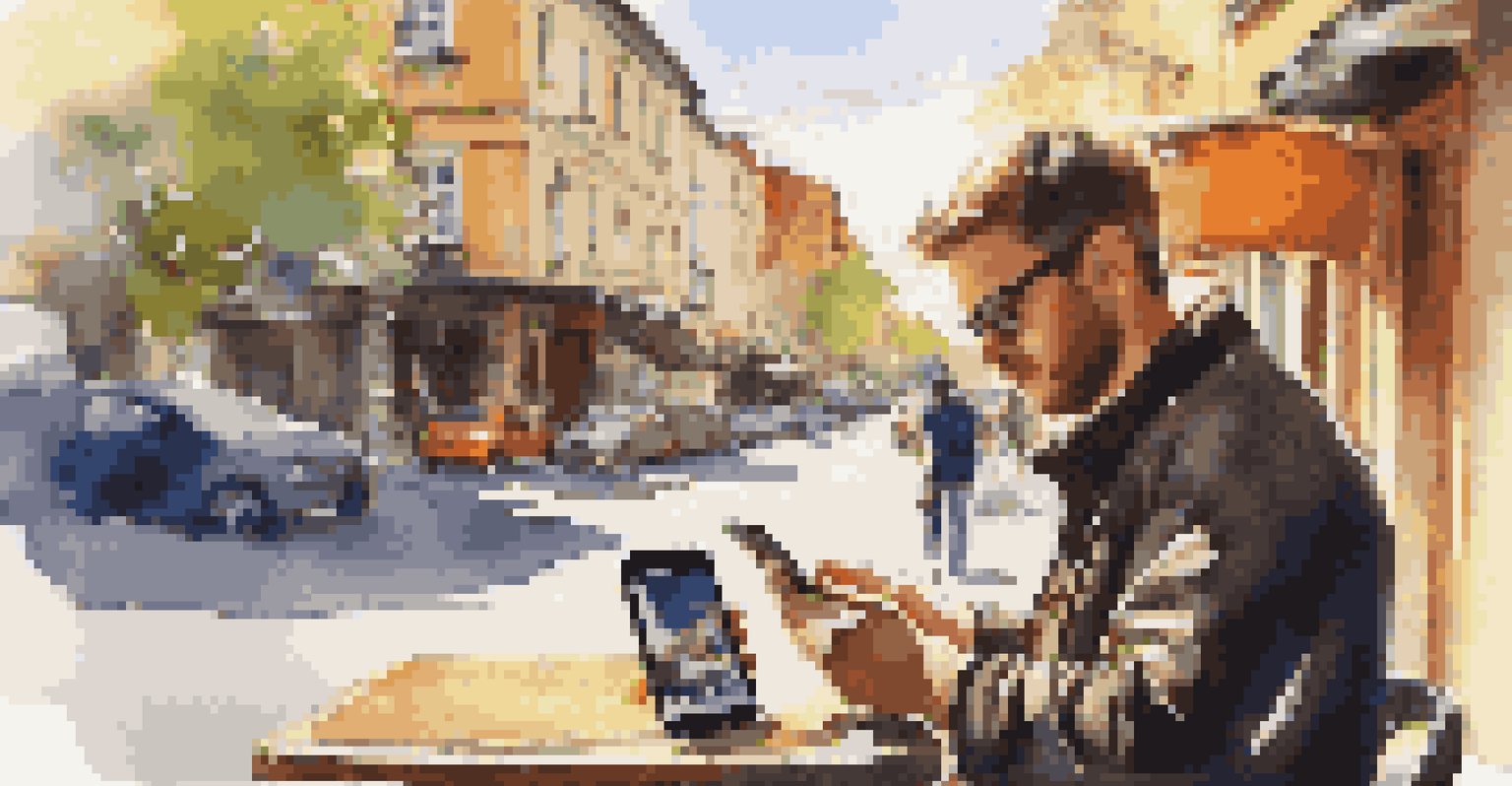Photography Gear for Solo Travelers: Stay Light and Agile

Choosing the Right Camera: Balance Quality and Portability
When selecting a camera for solo travel, the balance between quality and portability is key. A compact mirrorless camera or a high-end point-and-shoot can offer excellent image quality without the bulk of DSLRs. This way, you can capture stunning images without feeling weighed down.
Photography is the only language that can be understood anywhere in the world.
Consider features like interchangeable lenses for versatility, which allow you to adapt to different shooting conditions. However, remember that more lenses can mean more weight, so choose wisely based on your travel itinerary. Lightweight options like prime lenses can provide sharp images without adding much heft to your pack.
Ultimately, the best camera for you is one that fits comfortably in your hand and your bag. Spend some time testing cameras in-store to find one that feels right, ensuring you’ll want to carry it around all day while exploring new destinations.
Essential Lenses: Versatility Without the Weight
For solo travelers, having the right lens is essential for capturing diverse scenes. A versatile zoom lens, such as a 24-70mm, can cover a wide range of situations from landscapes to portraits, reducing the need to carry multiple lenses. This not only lightens your load but also streamlines your shooting process.

If you prefer a more minimal approach, consider a high-quality prime lens, like a 35mm or 50mm, which provides excellent sharpness and a lightweight design. These lenses are perfect for street photography or capturing candid moments without drawing too much attention.
Balance Quality and Portability
Choosing a compact camera ensures you capture stunning images without the bulk, making it ideal for solo travel.
Ultimately, choose lenses that align with your photography style and the types of shots you want to capture. A well-chosen lens can make all the difference, allowing you to create stunning images while keeping your gear light.
Tripods: Stability on the Go with Compact Options
A stable shot can elevate your photography, making a tripod an important piece of gear, even for solo travelers. Thankfully, there are compact tripods designed to be lightweight without sacrificing stability. Look for options that fold down small and weigh less than a couple of pounds.
The best camera is the one you have with you.
Another great alternative is a travel tripod with flexible legs, which can be wrapped around trees, poles, or uneven surfaces. This versatility allows you to set up shots in a variety of environments, whether you’re in a bustling market or a serene landscape.
However, if you find a tripod too cumbersome, consider using a sturdy mini-tripod or even a gorilla pod. These options can provide stability while easily fitting into your bag, giving you the best of both worlds.
Protective Gear: Keep Your Equipment Safe and Light
Traveling solo means being responsible for your gear, so investing in protective cases is vital. Look for lightweight camera bags or pouches that provide adequate cushioning without adding bulk. A well-padded backpack can also double as a daypack, allowing you to carry your camera gear and personal items seamlessly.
Waterproof or weather-resistant bags can be lifesavers if you encounter unexpected weather. They help ensure your gear remains dry and functional, allowing you to keep shooting regardless of the conditions. Some bags even have customizable compartments, so you can organize your gear efficiently.
Invest in Lightweight Accessories
Smart accessories like lightweight filters and portable flashes enhance your photography experience without adding much weight.
Remember, the goal is to protect your equipment while maintaining a lightweight profile. Choosing the right protective gear can help you travel confidently, knowing your camera is safe.
Smart Accessories: Enhance Your Shooting Experience
When it comes to photography gear, the right accessories can make a world of difference. Lightweight filters, such as polarizers or ND filters, can help you manage lighting conditions and enhance your photos without taking up much space. These small tools can help elevate your photography game significantly.
Additionally, consider carrying a portable external flash or a small LED light for low-light situations. These compact devices can help you capture stunning images even in challenging lighting without adding much weight to your pack.
Lastly, don’t forget about extra batteries and memory cards. Keeping a few spares will ensure that you don't miss important moments due to a dead battery or full memory card, allowing you to focus on your adventure instead.
Editing on the Go: Choose Lightweight Software
Editing your photos while traveling can be both fun and practical. Lightweight editing software, such as Adobe Lightroom Mobile or Snapseed, allows you to make quick adjustments to your images without needing a powerful laptop. This way, you can keep up with your photography while on the road.
Using your smartphone for editing can save you space in your bag and let you share your adventures in real time. Plus, many of these apps offer user-friendly interfaces that make the editing process straightforward, even for beginners.
Plan Your Gear Wisely
Creating a packing list of essential photography gear helps you avoid overpacking while ensuring you have what you need.
Remember, the aim is to keep your workflow light and efficient. By choosing the right tools, you can quickly enhance your photos and share your travel memories with friends and family, all while keeping your gear agile.
Planning Your Gear: Know What to Pack
Before you embark on your solo adventure, it’s essential to plan what photography gear to take. Start by identifying the types of shots you want to capture and the environments you’ll be in. This will help you determine the necessary equipment while avoiding overpacking.
Create a packing list that prioritizes lightweight and versatile gear. Aim for a balance between ensuring you have what you need and keeping your load manageable. Remember, it’s better to have a few quality items than a bag full of unnecessary gear that can slow you down.

Lastly, always test your gear before the trip. Familiarize yourself with how everything works so you can spend more time enjoying your travels and less time fumbling with your equipment when the moment arises.